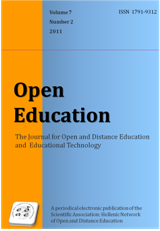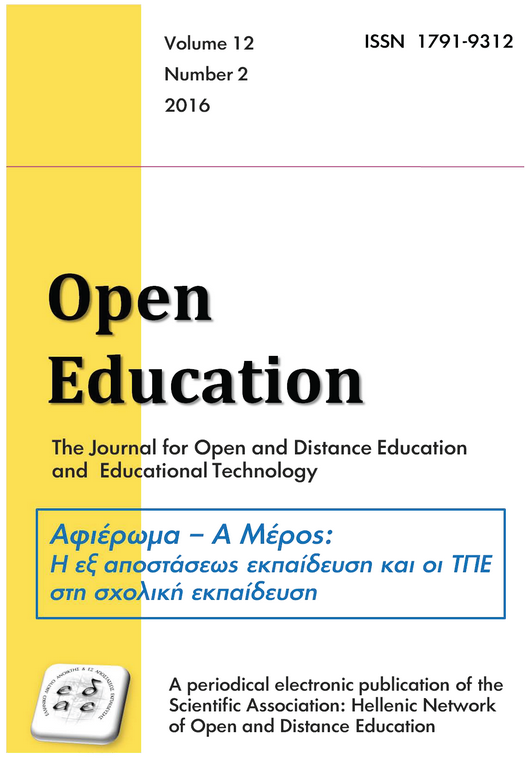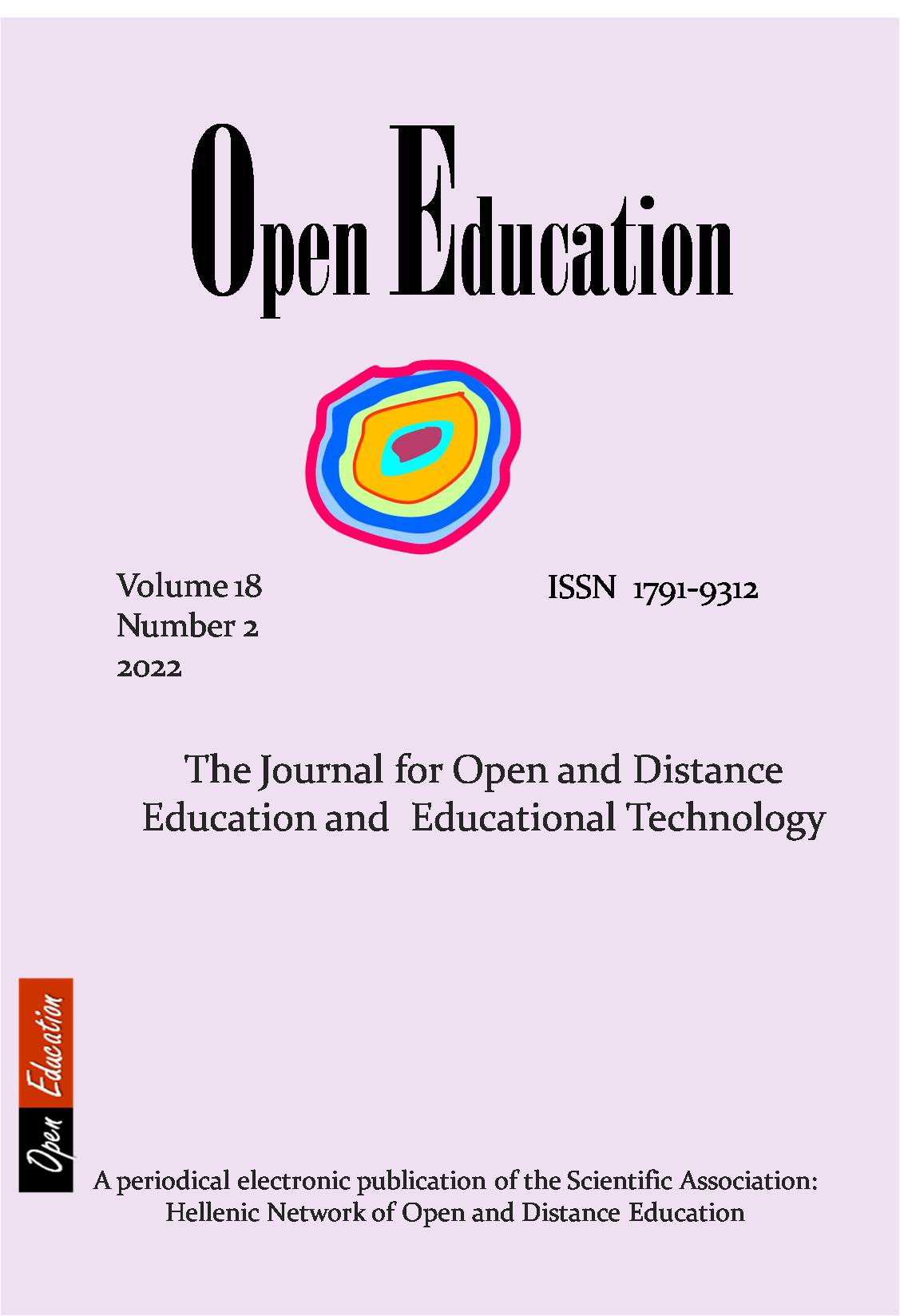Interactive Digital Teaching Scenario of Using and Creating Videos for Teaching Science Technology Engineering Mathematics
Abstract
Video creation at school focuses on tools and methods to support all stages of video production in the classroom, in the context of active learning and the cultivation of 21st Century skills. The methods used emphasize on the approach of audiovisual language and the use of collaborative learning techniques that enhance creativity, therefore they have the potential to make teaching attractive to young people. The concept of “teaching scenario” is referred to a sequence of learning activities, implemented in a concrete pace aiming to achieve specific learning goals. A digital teaching scenario contains the design of the teaching process including digital resources, goals, methods, educational Media and also simple to more complex learning activities organized in a concrete framework for their implementation. The A.E.S.O.P – Advanced Electronic Scenarios Operating Platform (AESOP), is developed by the Institute of Educational Policy (IEP) in Greece on the framework of the project “Digital System– Online Platform of Submission, Evaluation, Administration and Utilization of Digital Scenarios, Guidance and Support of Teachers” aiming to collect, evaluate and distribute digital teaching scenarios developed by the teachers themselves. These scenarios will serve as proposals for peers in Primary and Secondary Education to use them in the classroom by simply applying them step by step, either modifying them or extending them to new contexts. The platform provides innovative digital tools to teachers, which enable them to design, develop and implement digital teaching scenarios in everyday school practice, following the objectives of the Curriculum. Scenarios on the AESOP platform are designed for a specific educational level and they are related to specific or interdisciplinary cognitive subjects. The article presents the interactive digital teaching scenario at the AESOP Platform entitled “Creating Video at the School-Lab”, which is available at the web address http://aesop.iep.edu.gr/node/13278. The scenario suggests methods of using and creating video at school aspiring to an attractive approach to STEM (Science, Technology, Engineering, Mathematics) cognitive subjects and it is proposed for implementation at the platform’s category “Experiential Actions and Research – Project”. It has been rated as “Best Scenario” after the evaluation carried out by two evaluators on the basis of criteria set by the Board of the Institute for Educational Policy.
The first section of the article presents the literature review in the field of Media Literacy in a Digital Environment putting emphasis on Audiovisual Media and its use in Distance Learning. Europe faces the challenge of ensuring that each European citizen will be able to understand and use digital Media. Digital skills are now essential for citizens in order to be able to participate actively in a fast transforming society. Teachers today have the potential to use audiovisual Media with concrete pedagogical methods within the classroom or in online environments. They can integrate, re-use, translate, subtitle, compile audiovisual Media into face-to-face or online learning environments, emphasizing on interactive activities and even more using them as tools for visual creation and expression. The creation of fiction or documentary student videos enables active and collaborative learning, enhances participation, creativity and co-creativity in authentic learning environments and it also supports the audiovisual literacy. Next sections of the article present the educational problem in which this scenario proposes solutions, the general description of the content, the pedagogical framework of the scenario and the five phases of its implementation. The educational problem combines the necessity of Media Literacy today and the ways to face students’ stress for STEM topics. Within the general description of the content, the “School-Lab” educational activity is presented and its methods of implementation in Greek schools. The “School-Lab” educational activity is a video competition aiming to Science communication organized by the British Council, the Ministry of Education and also the organization Science Communication (Sci-Co), recording high impact in school communities. The competition calls groups of students to find an interesting, innovative and comprehensive way to present a STEM topic on a short video. Students are encouraged and supported by their teachers and also young scientists who act as online mentors. The five phases of implementation are the following: Searching for the Idea Writing the script Recording Processing of the video Listening others’ thoughts/opinions Good practices based on digital audiovisual media need to be extended and disseminated to distance learning. In addition, it is necessary to create conditions for the methodical use of the available audiovisual resources, with emphasis on the systematic organization of teachers’ professional development.
The AESOP platform is a portal of interactive teaching scenarios, and each one of them provides a virtual learning environment based on digital educational resources. In addition, it enables teachers to develop, store and share educational scenarios by using a range of interactive digital tools, innovative for Greek education, utilizing the most up-to-date Web technologies. Trying to communicate Science, the scenario “Creating Video at the School-Lab” proposes students’ collaboration and the development of their creativity, providing guidance to teachers. The teaching scenario aims to act as a “Guided Didactic Conversation” for teachers willing to support the design and development of student videos in the “School-Lab” educational activity in a context of complementary distance learning. During its design, tools of the AESOP Platform were used, such as interactive presentations, interactive videos and worksheets embedded in the scenario to enable asynchronous interaction with educational material. Enhancing interactivity between learners and educational material is a primary objective in a virtual learning environment so as to enhance the active engagement of learners in learning processes besides their passive participation. The scenario provides sources of information and serves the purpose of the category “Experiential Actions and Research – Project” that supports students to develop the necessary attitudes and social, self-learning, meta-cognitive and methodological skills required by self-regulated learning (“learning to learn”). Students are actively participating in learning by linking information with their individual and collective experience, but also with broader social issues. The proposed digital scenario aims to inspire, foster motivation and enhance creativity in student groups so that Science teaching will become attractive to young people. Creating video at schools is a way to combine STEM cognitive fields with the Arts, so the digital scenario approaches recent trends of STEAM (Science, Technology, Engineering, Art, Mathematics). Furthermore, the intersection between STEM and the Arts supports the active engagement of girls, promoting gender equality in STEM education. The article is completed with the discussion and conclusions, highlighting the potential of the AESOP Platform and the ways in which its functionalities were used to support the learning objectives of the concrete scenario. The implementation of the digital scenario supports the work of teachers to create an authentic learning environment that provides students with those incentives which they need in order to approach and understand STEM subjects, and it also offers conditions for collaborative creativity and the cultivation of 21st Century skills.
Article Details
- How to Cite
-
Παπαδημητρίου Σ. (2018). Interactive Digital Teaching Scenario of Using and Creating Videos for Teaching Science Technology Engineering Mathematics. Open Education: The Journal for Open and Distance Education and Educational Technology, 14(2), 10–25. https://doi.org/10.12681/jode.19002
- Issue
- Vol. 14 No. 2 (2018)
- Section
- Section 1
Copyright Notice
Authors who publish with this journal agree to the following terms:
Authors retain copyright and grant the journal right of first publication with the work simultaneously licensed under a Creative Commons Attribution Non-Commercial License that allows others to share the work with an acknowledgement of the work's authorship and initial publication in this journal.
Authors are able to enter into separate, additional contractual arrangements for the non-exclusive distribution of the journal's published version of the work (e.g. post it to an institutional repository or publish it in a book), with an acknowledgement of its initial publication in this journal.
Authors are permitted and encouraged to post their work online (preferably in institutional repositories or on their website) prior to and during the submission process, as it can lead to productive exchanges, as well as earlier and greater citation of published work.







